- Author: Kathy Keatley Garvey

Lark Coffey, an assistant professor in the Department of Pathology, Microbiology and Immunology, UC Davis School of Veterinary Medicine and a member of the Center for Vectorborne Diseases, will speak on "Zika Virus in Macaques, Mice and Mosquitoes: Contrasting Virulence and Transmissibility in Disparate Hosts."
And her host is medical entomologist and seminar coordinator Geoffrey Attardo, assistant professor in the UC Davis Department of Entomology and Nematology. This is part of the department's series of fall seminars.
Coffey says on her website: "Mosquito-borne viruses like Zika, chikungunya, West Nile, St. Louis encephalitis and dengue virus are expanding to cause more human infections worldwide. Unfortunately, no licensed human vaccines for these viruses are available. Management of disease is therefore restricted to palliative care for infected people and minimizing exposure to mosquitoes. Our research focuses on several central themes with a common goal of reducing the burden of disease caused by arboviruses. These include: understanding viral genetic factors that promote arbovirus outbreaks predicting viral mutations that enhance arbovirus transmissibility by mosquitoes and disease in humans or animals increasing safety of candidate live-attenuated vaccines improving arbovirus surveillance in mosquitoes."
Her abstract of her seminar Nov. 7 is technical. "Fetal microcephaly and death are now recognized as severe forms of congenital Zika syndrome; however, it is still unclear whether recent Zika virus (ZIKV) mutations contribute to this phenotype," Coffey says in her abstract. "We identified a single intrahost variant in the ZIKV NS2B protein (NS2BM1404I) from a rhesus macaque (RM) fetus that died after experimental ZIKV inoculation in the first trimester. Targeted deep sequencing flanking NS2B1404 in subsequent cohorts of RM mothers and their fetuses identified NS2BM1404I at minority frequency and sometimes at consensus levels in 3 additional dead or stillborn RM fetuses and/or the plasma of their mothers and in 2 more RM mother and fetus pairs whose fetuses survived to near term or were born alive. In outbred pregnant mice inoculated subcutaneously, we observed that NS2BI1404 engineered into an infectious clone confers fetal infection while ZIKV-NS2BM1404 does not. By examining sequence data from recent epidemics, we found that NS2BM1404I occurs rarely (5/500, 1%) in consensus human ZIKV genomes.
"We also deep sequenced ZIKV genomes from non-pregnant human adults, infants, and Ae. aegypti from the epidemic and observed that NS2BI1404 was more often present at intra-host levels in humans compared to mosquitoes," she continues in her abstract. "Since the primary ZIKV transmission cycle is human-mosquito-human, viral mutations that arise in one host must be maintained in the alternate host to be perpetuated. We therefore hypothesized that ZIKV NS2BM1404Imay not be efficiently transmitted by Aedes aegypti mosquitoes, explaining its low frequency in humans during outbreaks. Using infectious clone-derived ZIKV, we examined vector competence in Ae. aegypti from Puerto Rico. Although infection and dissemination rates were not different, we found that Ae. aegypti did not transmit ZIKV-NS2BI1404 as efficiently compared to ZIKV-NS2BM1404 5 [7/20 (35%) versus 10/20 (50%), p>0.05] and 7 [3/20 (15%) versus 13/20 (65%), P<0.001, Chi-squared] days post-feed. The poor transmissibility of this potentially vertebrate adaptive ZIKV mutation may explain its low frequency in febrile humans. This data highlights the evolutionary complexity during arbovirus transmission cycles and suggests that some pathogenic viral mutations are not likely to spread in epidemics."
Coffey received her bachelor of science degree in biology from the University of the South, Sewanee, Tenn., in 2000, and her doctorate in experimental pathology at the University of Texas Medical Branch, Galveston, Texas in 2005.

- Author: Kathy Keatley Garvey
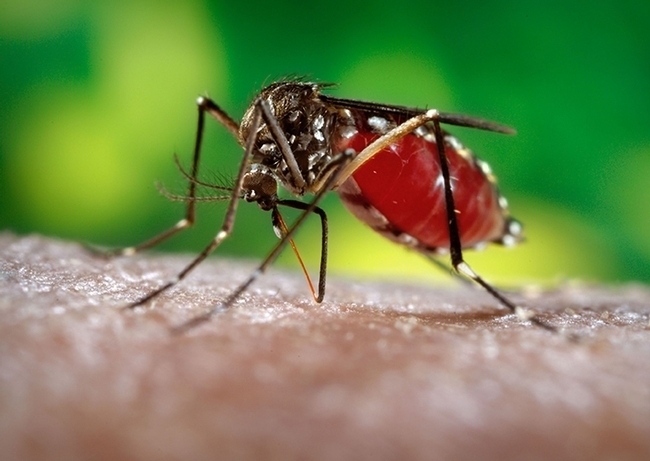
Chemical ecologist and mosquito researcher Walter Leal, distinguished professor in the UC Davis Department of Molecular and Cellular Biology, and his lab collaborated with scientists in Recife to ask “Does Zika Virus Infection Affect Mosquito Response to Repellents?”
The work, funded by the National Institutes of Health, was published Feb. 16 in Scientific Reports of the journal Nature. The researchers used mosquitoes originating from colonies reared by UC Davis medical entomologist Anthony Cornel and from colonies in Recife.
“We used assays mimicking the human arm to test the mosquitoes infected with the Zika virus,” Leal said, “and we asked whether the Zika infection affects mosquito response to repellents.” They tested DEET and Picaridin, considered the top two mosquito repellents. “We discovered that DEET works better than Picaridin against the southern house mosquito, Culex quinquefasciatus, and the yellow fever mosquito, Aedes aegypti, whether infected or not.”
The researchers also found that old mosquitoes that already had a blood meal “were less sensitive to repellents,” said Leal, adding “It was not clear whether this was due to the virus, but mostly likely because of age. ”
“Lower doses--normally used in commercial products--work well for young mosquitoes,” Leal said, “but the old ones are the dangerous ones because they may have had a blood meal infected with virus and there was enough time for the virus to replicate in the mosquito body.”
“The bottom line: to prevent bites of infected mosquitoes, higher doses of repellent are needed. The data suggest that 30 percent DEET should be used. Lower doses may repel nuisance young mosquitoes, but not the dangerous, infected, old females.”
Leal, a native of Brazil, collaborates with Rosangela Barbosa and Constancia Ayres of the Oswaldo Cruz Foundation (FIOCRUZ-PE), Recife, Brazil. The work with infected mosquitoes was conducted at FIOCRUZ-PE.
Leal, Barbosa and Ayres co-authored the paper with Fangfang Zeng and Kaiming Tan, both of the Leal lab; and Rosângela M. R. Barbosa, Gabriel B. Faierstein, Marcelo H. S. Paiva, Duschinka R. D. Guedes, and Mônica M. Crespo, all of Brazil.
The World Health Organization (WHO) recommends that people traveling to or living in areas with Zika virus (ZIKV) outbreaks or epidemics adopt preventive measures, including the use of insect repellents, to reduce or eliminate mosquito bites. Prior to the Feb. 16 published research, it was not known whether the most widely repellents are effective against ZIKV-infected mosquitoes, “in part because of the ethical concerns related to exposing a human subject's arm to infected mosquitoes in the standard arm-in-cage assay,” the researchers pointed out.
They used a previously developed, human subject-free behavioral assay, which mimics a human subject to evaluate the top two recommended insect repellents.
Scientists isolated the Zika virus (ZIKV) nearly seven decades ago from a sentinel rhesus monkey while they were trying to unravel the cycle of sylvan yellow fever virus in Uganda..
According to the Centers for Disease Control and Prevention:
- Zika is spread mostly by the bite of an infected Aedes species mosquito (Ae. aegypti and Ae. albopictus). These mosquitoes bite during the day and night. The virus can also be sexually transmitted.
- Zika can be passed from a pregnant woman to her fetus. Infection during pregnancy can cause certain birth defects.
- There is no vaccine or medicine for Zika.
- Local mosquito-borne Zika virus transmission has been reported in the continental United States.
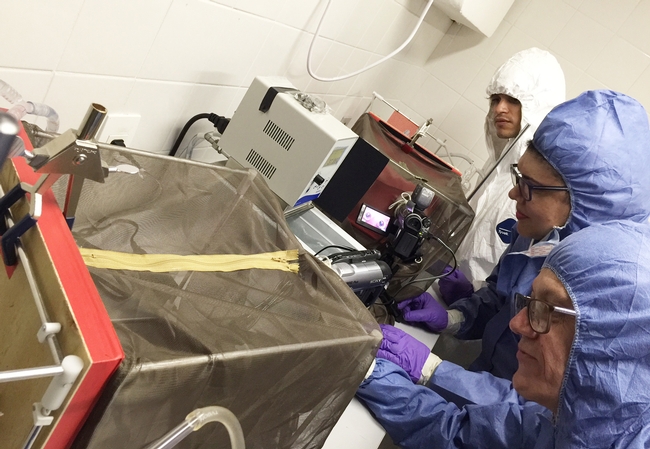
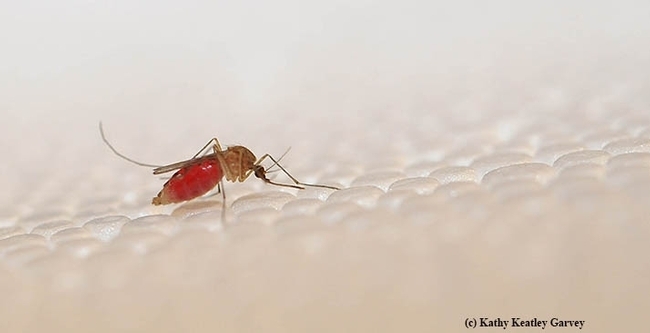
- Author: Kathy Keatley Garvey
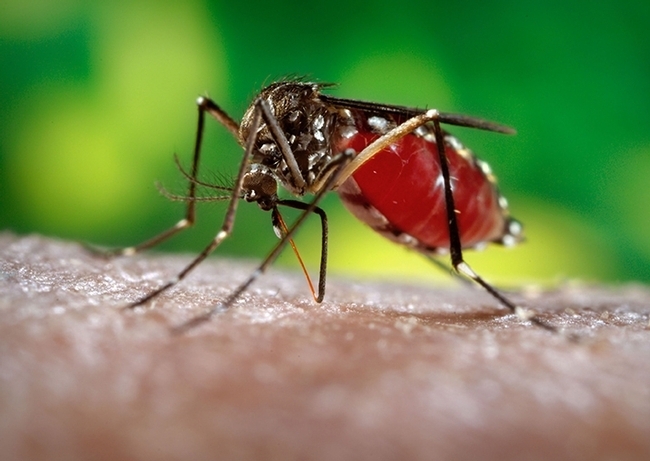
That's what UC Davis chemical ecologist Walter Leal, co-chair of the International Congress of Entomology (ICE 2016) recently held in Orlando, Fla., wrote in his newly published opinion piece, titled "Zika Mosquito Vectors: the Jury Is Still Out" in F1000 Research.
Leal, a mosquito researcher and distinguished professor in the UC Davis Department of Molecular and Cellular Biology, co-chaired ICE 2016 with Alvin Simmons, research entomologist with the United States Department of Agriculture's Agricultural Research Service (USDA/ARS), U.S. Vegetable Laboratory in Charleston, S.C.
The conference, themed "Entomology Without Borders," drew 6,682 delegates from 102 countries. The last time ICE met in the United States was four decades ago. The venue then: Washington, D.C.
One of the symposia at the Orlando meeting was the Zika Symposium, "which covered multiple aspects of the Zika epidemic, including epidemiology, sexual transmission, genetic tools for reducing transmission, and particularly vector competence," Leal wrote. "While there was a consensus among participants that the yellow fever mosquito, Aedes aegypti, is a vector of the Zika virus, there is growing evidence indicating that the range of mosquito vectors might be wider than anticipated. In particular, three independent groups from Canada, China, and Brazil presented and discussed laboratory and field data strongly suggesting that the southern house mosquito, Culex quinquefasciatus, also known as the common mosquito, is highly likely to be a vector in certain environments."
Leal based his opinion piece mainly on the current literature and the Zika Symposium at ICE 2016, which was organized by Constância Ayres, Oswaldo Cruz Foundation (FIOCRUZ-PE), Recife, Brazil (he collaborates with Ayres) and Adriana Costero, National Institutes of Health, Bethesda, Md. The speakers included worldwide experts from the United States, Brazil, China and Canada.
Ironically, the Zika virus wasn't a household word or in most entomologists' vocabulary when Leal and Simmons began planning the ICE 2016 meeting several years ago.
Now scores of researchers are tackling the Zika virus (ZIKV), first isolated first from a febrile monkey and later from the mosquito Aedes africanus. "ZIKV was isolated from humans for the first time in 1954 during an outbreak of jaundice suspected of being yellow fever," Leal recounted.
"During the discussion at the end of the symposium, the forum was opened for questions and comments," Leal wrote. Scott Ritchie of James Cook University, Australia, asked “Is anyone looking for the virus in birds?”
"This question captures the sentiment that both questions were thought provoking, and we still do not have all or many answers when it comes to ZIKV. Hopefully, we will be better prepared when convening in Finland for ICE 2020. Wouldn't it be wonderful to report in Helsinki that mosquito vector populations have been reduced or eliminated, the Zika and other epidemics were contained, vaccines have been made available, and entomologists are ready to further improve the human condition by tackling other problems than the Zika epidemic?"
Read the entire F1000 piece at https://f1000research.com/articles/5-2546/v1 and ESA's Entomology Today write-up.
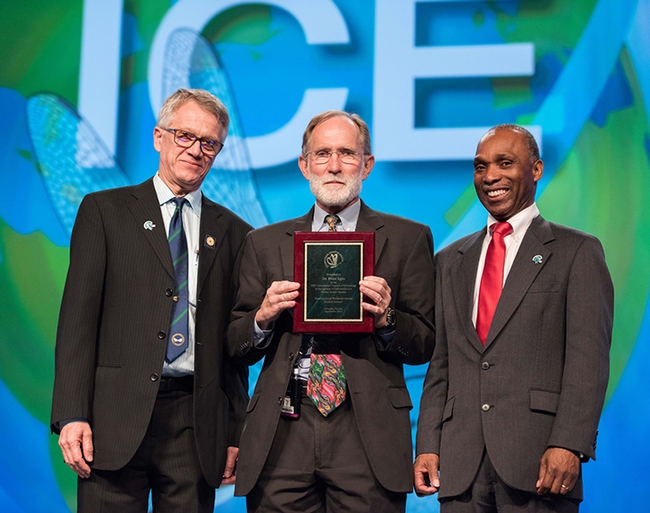

- Author: Kathy Keatley Garvey

In a groundbreaking discovery, a scientific team of Brazilians and Brazilian-born chemical ecologist Walter Leal of the University of California, Davis, has announced that the Zika virus has been detected in wild-caught Culex quinquefasciatus mosquitoes in Recife, the epicenter of the Zika epidemic.
Scientists from the Fiocruz Institute, Pernambuco, confirmed the discovery July 21. The detection could have widespread repercussions, as the Culex mosquitoes are more common and widespread than the yellow fever mosquito, Aedes aegypti, known as the primary carrier of the Zika virus.
Leal, who collaborates with Fiocruz Institute researcher Constancia Ayres in a National Institutes of Health-sponsored project on the investigation of Zika in the C. quinquefasciatus, said that the Brazilian lab earlier discovered that Culex had the capability of transmitting the virus. Although the scientists were able to infect the lab mosquitoes with the virus, they had not found the virus in wild-caught mosquitoes—until now.
“This could have major repercussions here in the United States and in other parts of the world,” said Leal, a distinguished professor in the UC Davis Department of Molecular and Cellular Biology who is co-chairing the International Congress of Entomology meeting Sept. 25-30 in Orlando, Fla. The conference is expected to draw some 7000 entomologists throughout the world.
Leal said more work needs to be done to see if Culex mosquitoes are playing a role in the current epidemic. In an interview July 21 with health reporter Jennifer Yang of the Toronto Star, Canada's largest daily, he commented: “It looks like there were more vectors than we thought, and this is one of them. We don't have to panic, but we have to know. And now that we know, we have to take care of the Culex.”
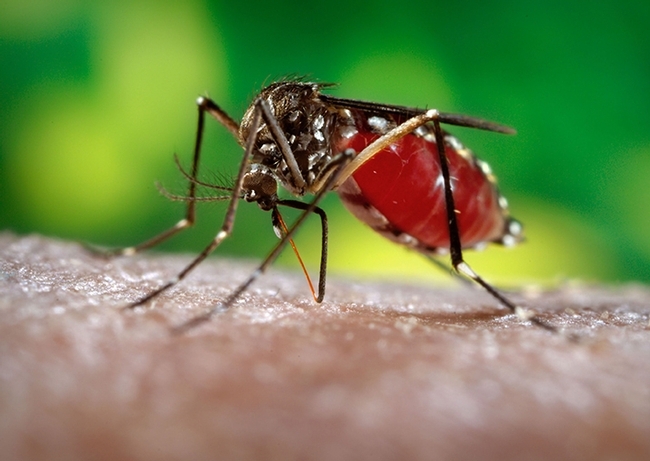
A. aegypti is already established in California; it has spread to at least seven counties since its discovery in Clovis, Fresno County, in June 2013, according to medical entomologist Anthony Cornel of the UC Davis Department of Entomology and Nematology and the UC Kearney Agricultural Research and Extension Center, Parlier.
The Zika virus, which can result in birth defects in pregnancy, can be transmitted through exposure to infected blood or sexual contact. The Centers for Disease Control estimates that between 400,000 and 1.3 million cases have been discovered across South, Central, and North America, where the disease was previously unknown.
Leal and a group of 18 students just hosted a Zika Public Awareness Symposium on May 26 at Giedt Hall, UC Davis campus. The podcast can be accessed at https://video.ucdavis.edu/media/Zika+Virus+Public+Awareness+Symposium/0_n3aupf5c
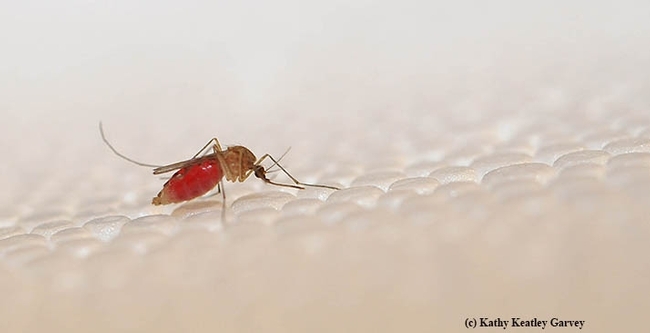
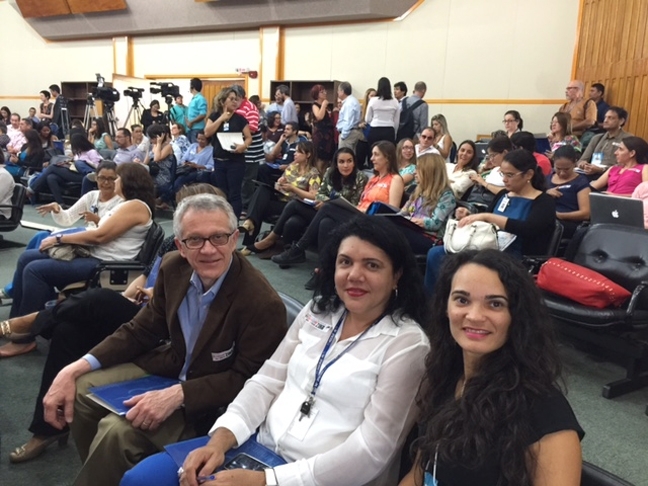
- Author: Kathy Keatley Garvey
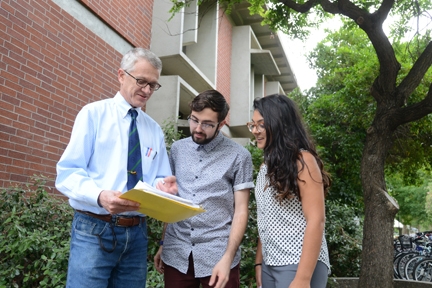
So screamed a recent USA Today headline in a quote attributed to the Centers for Disease Control and Prevention (CDC).
"Public health officials used their strongest language to date in warning about a Zika outbreak in the United States, as the Obama administration lobbied Congress for $1.9 billion to combat the mosquito-borne virus," the publication reported.
And now interest is spiking in the two-hour UC Davis "Zika Public Awareness Symposium," set Thursday, May 26 from 6:30 to 8:30 p.m. in Room 1001 of Giedt Hall and organized by coordinator Walter Leal, a chemical ecologist and professor in the UC Davis Department of Molecular and Cellular Biology, and 18 biochemistry students.
It's free and open to the public: to reserve space, RSVP to ucdstudentsagainstzikav@gmail.com.
The scientific-based symposium will include "expert panels and speakers throughout the United States and the world, including those working on the front lines of the Zika epidemic," Leal said.
Two Brazilian scientists who deal with patients and mosquito vectors at the epicenter of the Zika epidemic will speak (remote). Speakers also will include a scientist involved in the first documented case of sexual transmission of an insect-borne disease; specialists in dermatology, obstetrics and gynecology; and medical entomologists.
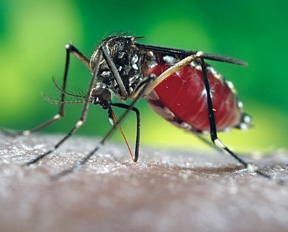
The Zika Epidemic – An Overview
Professor Walter S. Leal
UC Davis Department of Molecular and Cellular Biology
Congenital Zika Syndrome
Dr. Regina Coeli Ramos, University of Pernambuco, Brazil (remote)
Zika Virus and Me
Professor Brian Foy
Department of Microbiology, Immunology, and Pathology, Colorado State University
Zika Virus: Looking into Mosquitoes' Vectorial Capacity
Professor Constância F. J. Ayres
Department of Entomology, Fundação Oswaldo Cruz-Pernambuco, Brazil (remote)
Don't Let Mosquitoes Bug You with Zika – Repel Them
Professor Walter S. Leal
UC Davis Department of Molecular and Cellular Biology
DEET vs. Zika – I Would Go with the Former
Dr. Emanual Maverakis
Department of Dermatology, UC Davis School of Medicine
Keeping Mosquito at Bay, Not in Your Backyard
Dr. Paula Macedo
Laboratory Director, Sacramento-Yolo Mosquito & Vector Control District
Friends Don't Let Friends Get Zika
Dr. Stuart H. Cohen
Chief of the Division of Infectious Diseases and director of Hospital Epidemiology and Infection Control, UC Davis Medical School.
At the symposium, attendees will "learn the symptoms and learn the facts and science about Zika and how you can protect yourself from this disease," said Leal, who collaborates with researchers in his native Brazil. He recently participated in the international Zika research symposium there.
"It is very important that students and the public-at-large learn how to prevent a possible Zika epidemic as this is the first virus known to be transmitted both sexually and by mosquitoes," Leal said. "We thought that we did not have the vector (the yellow mosquito), but now our research in collaboration with Brazilian scientists indicates that our local mosquitoes (Culex) are also competent vectors. And more and more we hear cases of travelers returning home infect with Zika virus. I am so glad that a group of 18 students who took my biochemistry class last quarter decided to launch this initiative to educate their peers and citizens of Davis about this dangerous virus."
"This symposium is important to host because Zika is a rapidly spreading across the globe so people need to be informed," said Amarita Singh, one of the 18 students organizing the symposium. "Recent studies have shown that this particular virus not only affects pregnant women, but is a threat to all. Since there is no vaccine or medication, it is better to educate now to help prevention."
"I became more aware of the disease when Professor Leal began to discuss it in our biochemistry class, which is what originally sparked my interest," Singh said. "After learning about how dangerous the disease was and the discovery of the first case in Yolo County, I decided to take the opportunity in organizing the symposium."
Singh added: "It is incredible how much research has been done on Zika virus in the short amount of time. I am hopeful that in the near future that a vaccine will be developed, but until then we should do everything in our power to prevent this horrible virus from spreading. My concerns are that people may not be well informed which allows the virus to spread even more rapidly."
Said James Warwick, also one of the student organizers: "I think one of the scariest things about Zika in the United States is the lack of public knowledge about it. The scientific community needs to research the virus and develop a vaccine, but can't without funding. And without public pressure, securing funding is going to be slow. Also, the sheer suddenness in which Zika has burst onto the global scene has left both scientific research and public knowledge behind. That is why we are hosting the symposium, to bring the public up to speed, update them on the current research, and to give them the knowledge they need to protect themselves against transmission. As a byproduct, public awareness will increase public pressure to get the world on the right track to stop the spread of Zika."
"The virus itself is extremely alarming," Warwick said. "It can cause extreme neurological and immunological defects, as we see in babies born to infected mothers. But the direct hosts' symptoms usually consist only of temporary pain, rashes, fever, and the like; and only one in four or so people infected with Zika become symptomatic. So there is a very real possibility that a person could be infected, not be aware of it, and potentially pass on the undetected infection to sexual partners or their children. This is made all the more plausible by the fact that many people have never heard of Zika."
Should we worry about the Zika virus? Yes, Leal says, for several reasons: "Zika is likely to become an epidemic in the United States; the virus is transmitted sexually and by infected mosquitoes; and, more importantly, Zika infection in pregnancy causes severe fetal brain development, and other medical problems."
Zika, discovered in 1947, was named after the Zika Forest in Uganda. The first known human case occurred in 1952. “Prior to 2015, Zika virus outbreaks occurred in areas of Africa, Southeast Asia, and the Pacific Islands,” according to the CDC. “In May 2015, the Pan American Health Organization (PAHO) issued an alert regarding the first confirmed Zika virus infection in Brazil. On February 1, 2016, the World Health Organization (WHO) declared Zika virus a Public Health Emergency of International Concern (PHEIC).”



